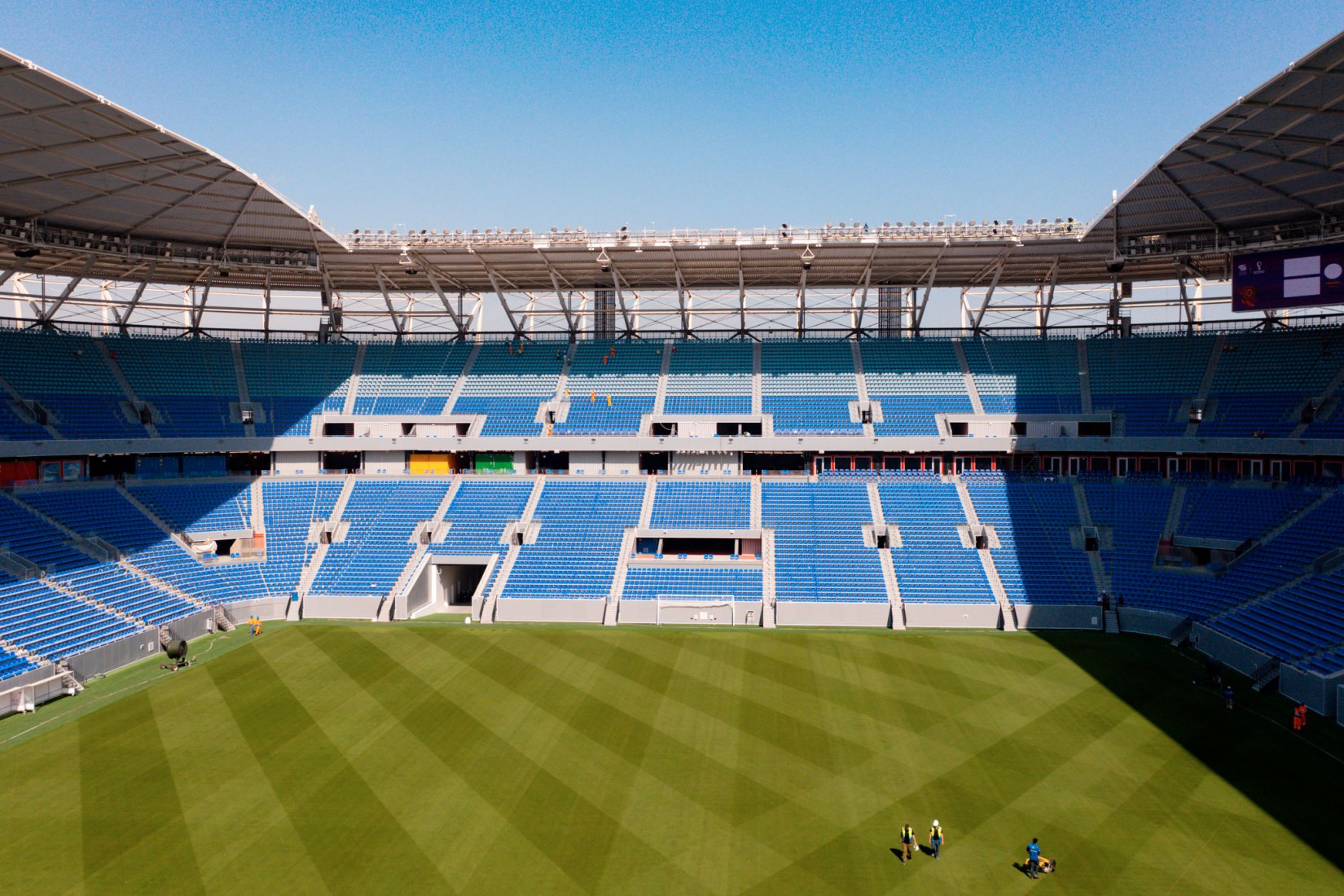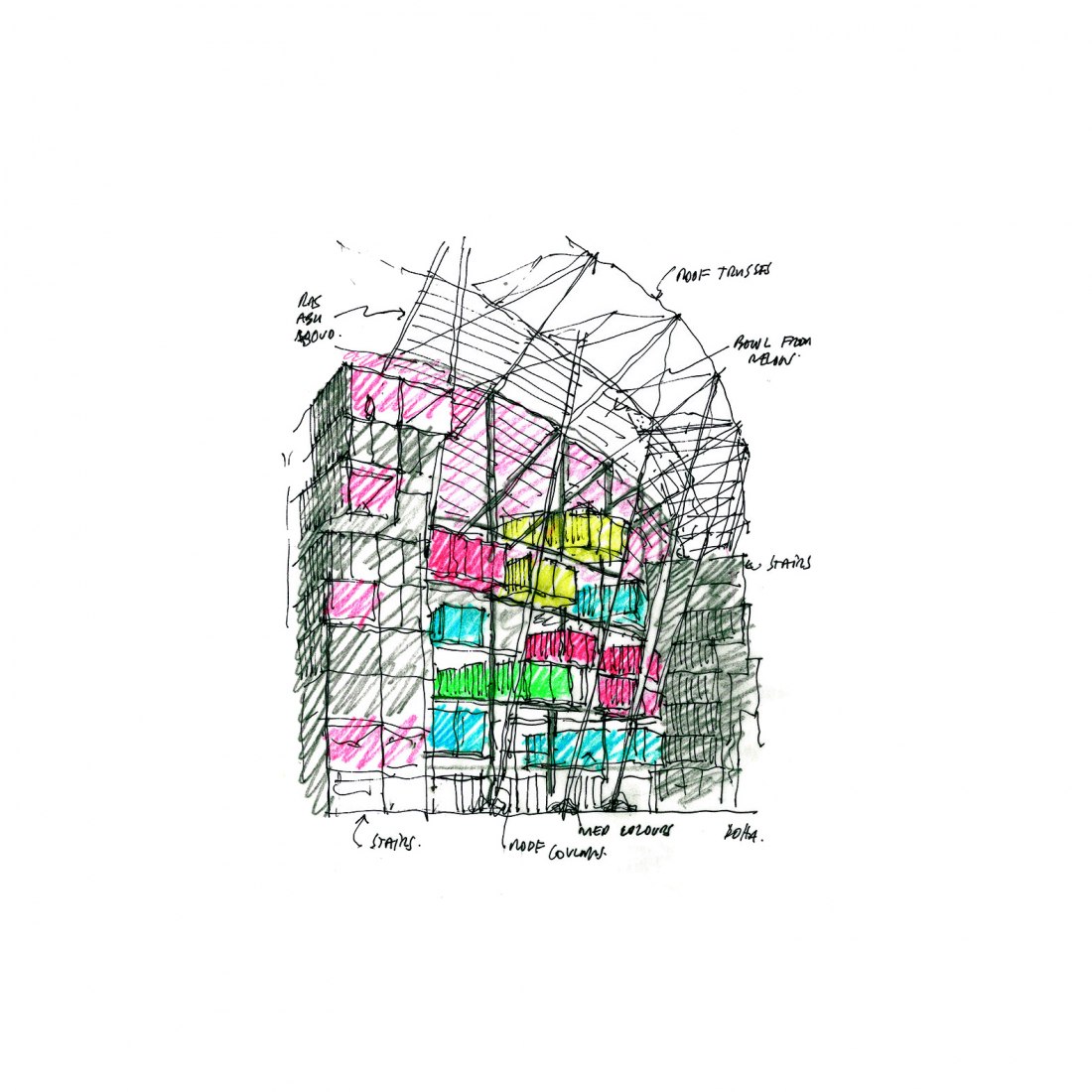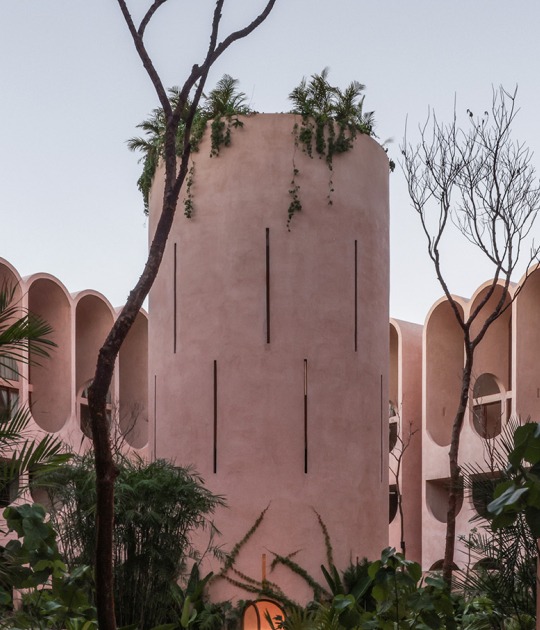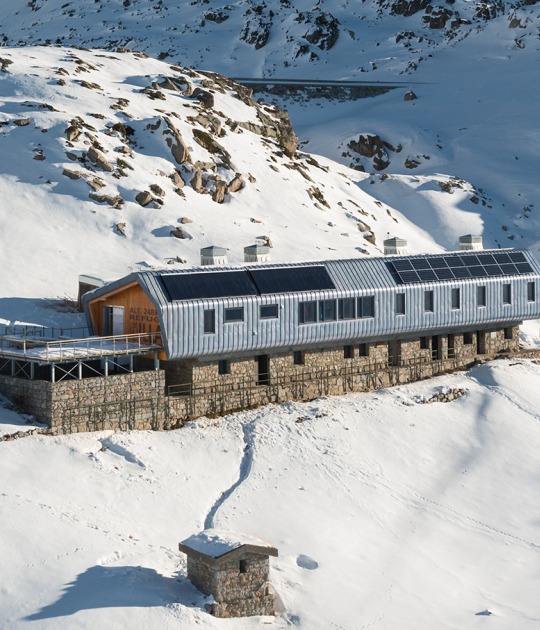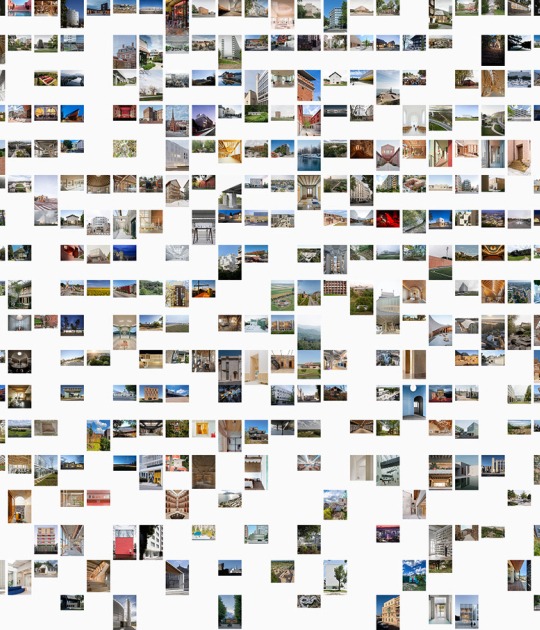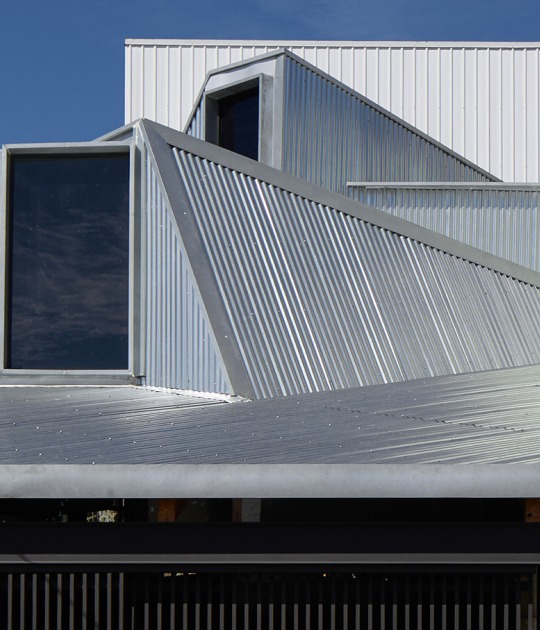Fenwick Iribarren Architects developed an innovative concept and it is the first demountable, transportable and reusable stadium of its kind in FIFA World Cup history. The stadium codifies each one of the elements used – including its 974 containers – to ensure they can be taken apart and will be demounted at the end of the World Cup and re-established as five smaller sports facilities or even moved to an entirely different location.
Its modular structure with 974 colourful shipping containers, was designed as a huge meccano, following principles of seriation with prefabricated slabs and metal supports; reversibility, using screwed or dry joinery; and sustainability, using recycled steel.
All the elements, combining a steel frame that evokes a high bay warehouse separated into different blocks, follow the ‘plug and play’ strategy that permits their prefabrication and later connection to the general net, allowing a shorter construction time and reduced costs.
The elements can be easily dismantled and transported as certified shipping containers from the near harbour. The ceiling panels, as well as the grandstands, can also be easily stacked and transported. This particular structure enables a reduced CO2 footprint due to less construction material and waste.
Stadium 974 is the only stadium positioned close to the sea and also is the first stadium that football fans see upon arriving in Qatar, due to its proximity to Hamad International Airport.
Its modular structure with 974 colourful shipping containers, was designed as a huge meccano, following principles of seriation with prefabricated slabs and metal supports; reversibility, using screwed or dry joinery; and sustainability, using recycled steel.
All the elements, combining a steel frame that evokes a high bay warehouse separated into different blocks, follow the ‘plug and play’ strategy that permits their prefabrication and later connection to the general net, allowing a shorter construction time and reduced costs.
The elements can be easily dismantled and transported as certified shipping containers from the near harbour. The ceiling panels, as well as the grandstands, can also be easily stacked and transported. This particular structure enables a reduced CO2 footprint due to less construction material and waste.
Stadium 974 is the only stadium positioned close to the sea and also is the first stadium that football fans see upon arriving in Qatar, due to its proximity to Hamad International Airport.





